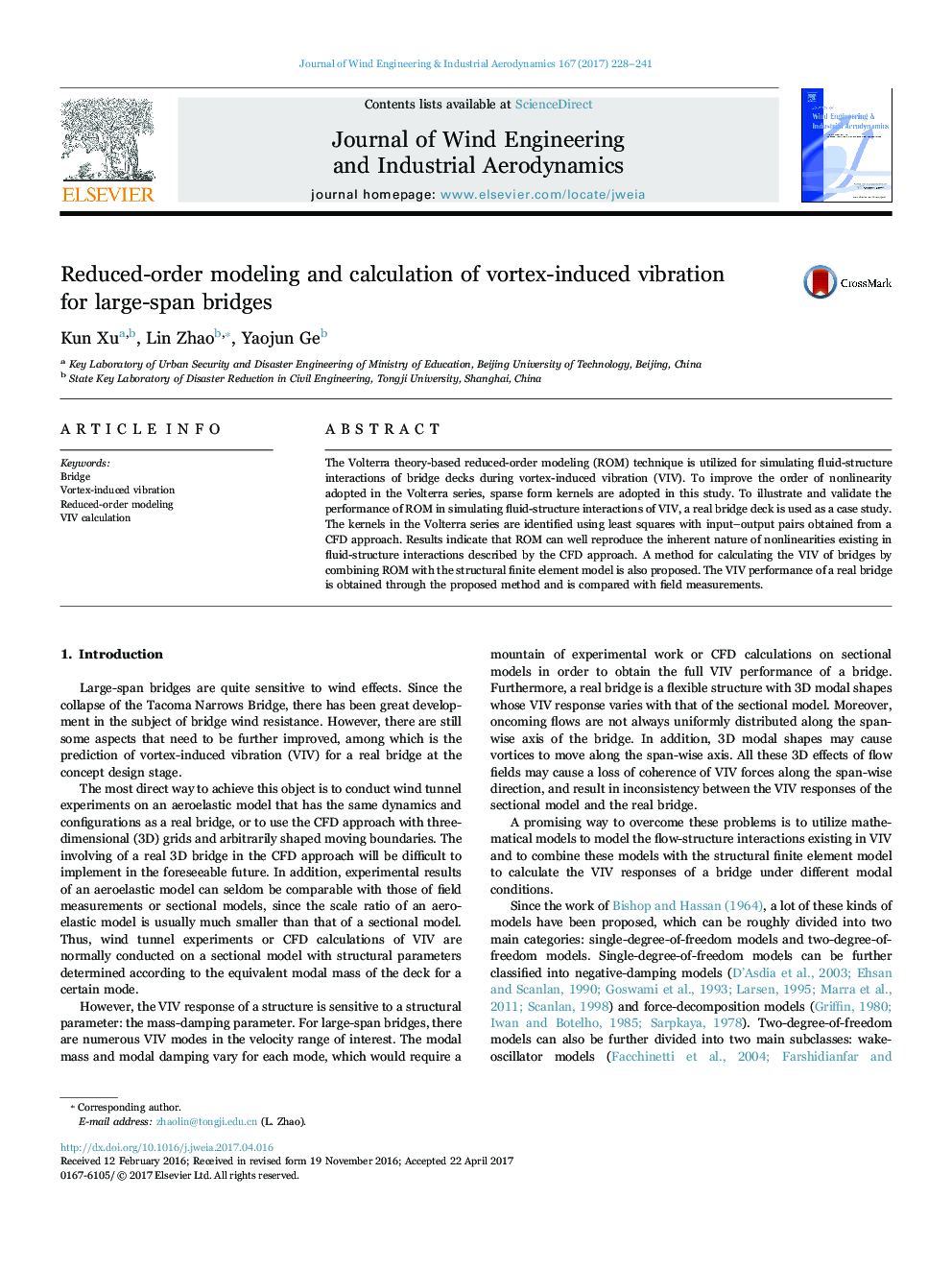| Article ID | Journal | Published Year | Pages | File Type |
|---|---|---|---|---|
| 4924878 | Journal of Wind Engineering and Industrial Aerodynamics | 2017 | 14 Pages |
Abstract
The Volterra theory-based reduced-order modeling (ROM) technique is utilized for simulating fluid-structure interactions of bridge decks during vortex-induced vibration (VIV). To improve the order of nonlinearity adopted in the Volterra series, sparse form kernels are adopted in this study. To illustrate and validate the performance of ROM in simulating fluid-structure interactions of VIV, a real bridge deck is used as a case study. The kernels in the Volterra series are identified using least squares with input-output pairs obtained from a CFD approach. Results indicate that ROM can well reproduce the inherent nature of nonlinearities existing in fluid-structure interactions described by the CFD approach. A method for calculating the VIV of bridges by combining ROM with the structural finite element model is also proposed. The VIV performance of a real bridge is obtained through the proposed method and is compared with field measurements.
Related Topics
Physical Sciences and Engineering
Energy
Renewable Energy, Sustainability and the Environment
Authors
Kun Xu, Lin Zhao, Yaojun Ge,
